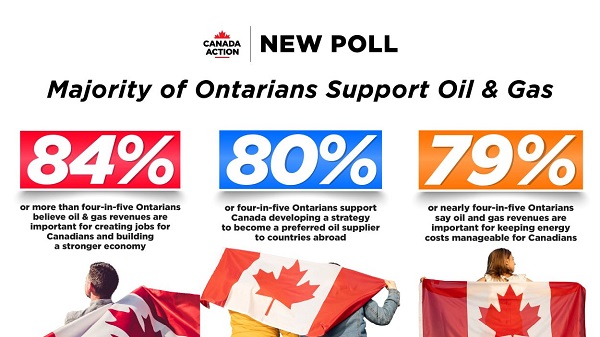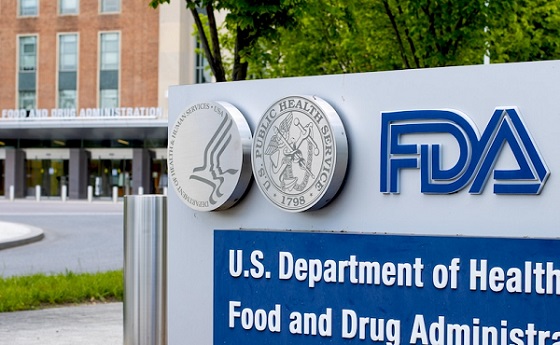Uncategorized
Post-Michael Florida: Fear, frustration and life on the edge

MEXICO BEACH, Fla. — Missing relatives and worries that looters are just outside the door. Dirty clothes. Hours-long lines for gasoline, insurance adjusters, food and water. No power, no air conditioning, no schools, no information and little real improvement in sight.
Daily life is a series of fears and frustrations, both large and small, for thousands of people living on the edge, more than a week after Hurricane Michael flattened thousands of square miles in the hurricane zone of the Florida Panhandle.
Erin Maxwell waited in line for fuel for more than an hour Thursday at a gasoline station that never opened. “I’m tired and want to go to sleep. I don’t want to wait in another line,” said Maxwell, eyes closed and her head tilted back on the seat.
Meanwhile, husband Mickey Calhoun fretted over the fate of his mother, Anita Newsome, 74. The retired sheriff’s deputy was last seen when officers took her to a hospital the day before Michael made landfall, her son said.
“We can’t find her or get word anywhere,” said an exasperated Calhoun, 54, wearing stained khaki pants and a dingy towel draped around his neck.
A few miles away, 70-year-old Ed Kirkpatrick and his 72-year-old wife, Sandra Sheffield, huddle together in a splintered mobile home surrounded by fallen pine trees. A noisy generator powers the old box fan blowing warm air across their den. They’re both afraid to leave because of widespread reports of looting.
The man, a diabetic who has a big scar down the middle of his chest from heart surgery, needs medical attention and ice to refrigerate his insulin, said Sheffield, who has a pacemaker. But getting out in traffic takes hours and precious fuel, she said, and looters could show up at any time.
“I don’t want to go anywhere because I know I’m safe here,” said Sheffield, burying her head in a twisted towel to cry.
Michael slammed into Florida’s Panhandle with 155 mph winds on Oct. 10 and retained hurricane-force winds deep into southern Georgia, also affecting the Carolinas and Virginia. Florida authorities on Thursday say the storm killed 24 people in the state, bringing the overall death toll to at least 34.
With power still out in much of the Panhandle and thousands of buildings destroyed or damaged by Michael, almost nothing is normal. Even simple tasks are difficult or impossible.
Driving times are doubled or tripled because roads are clogged with police and fire vehicles, utility trucks, returning residents and people seeking help. Lines are long outside a discount store where more than two dozen insurance, financial services and cellphone companies have set up in a temporary village of open-sided tents erected on asphalt.
Unseasonably warm temperatures in the 80s are adding to the misery because so few people can cool down with air conditioning. Bottled water is plentiful at roadside aid stations; ice is another matter.
Spotty cellphone service leaves those most vulnerable with little information to help them get by. Residents in Panama City eagerly ask for information about what happened about 20 miles away in devastated Mexico Beach, and for tips on finding pharmacies, coin-operated laundries and stores that might sell batteries to power flashlights with fading beams.
Kelli Ladik is living with four daughters and her husband in a camper parked outside their bayside home, which has severe water damage from rain that poured in when the roof failed. Ladik is so, so tired of the grime.
“We need running water more than anything. To be able to shower after a full day of cleaning would be great,” said Ladik.
Her kids, three of whom are school age, are all out of class and it’s unclear when classes might resume. Some school buildings are heavily damaged and leaders are still trying to account for all the teachers, administrators and others who are needed to get the system running again.
Watching friends and loved ones suffer is the hardest part for Nancy Bartice, who used to live near Ed Kirkpatrick and his wife. Feeling helpless to assist the couple, Bartice was trying to get to nearby Panama City Beach to get them gasoline and, perhaps, a better place to stay. Who knows how long the 16-mile journey could take.
“They have been the most blessed couple,” said Bartice, fighting away tears. “They helped me in a lot of bad situations, and I want to do the same in return.”
___
Associated Press writers Brendan Farrington in Tallahassee, Florida, and Freida Frisaro in Miami contributed to this report.
___
For the latest on Hurricane Michael, visit https://www.apnews.com/tag/Hurricanes .
Jay Reeves, The Associated Press
Uncategorized
Mortgaging Canada’s energy future — the hidden costs of the Carney-Smith pipeline deal


Much of the commentary on the Carney-Smith pipeline Memorandum of Understanding (MOU) has focused on the question of whether or not the proposed pipeline will ever get built.
That’s an important topic, and one that deserves to be examined — whether, as John Robson, of the indispensable Climate Discussion Nexus, predicted, “opposition from the government of British Columbia and aboriginal groups, and the skittishness of the oil industry about investing in a major project in Canada, will kill [the pipeline] dead.”
But I’m going to ask a different question: Would it even be worth building this pipeline on the terms Ottawa is forcing on Alberta? If you squint, the MOU might look like a victory on paper. Ottawa suspends the oil and gas emissions cap, proposes an exemption from the West Coast tanker ban, and lays the groundwork for the construction of one (though only one) million barrels per day pipeline to tidewater.
But in return, Alberta must agree to jack its industrial carbon tax up from $95 to $130 per tonne at a minimum, while committing to tens of billions in carbon capture, utilization, and storage (CCUS) spending, including the $16.5 billion Pathways Alliance megaproject.
Here’s the part none of the project’s boosters seem to want to mention: those concessions will make the production of Canadian hydrocarbon energy significantly more expensive.
As economist Jack Mintz has explained, the industrial carbon tax hike alone adds more than $5 USD per barrel of Canadian crude to marginal production costs — the costs that matter when companies decide whether to invest in new production. Layer on the CCUS requirements and you get another $1.20–$3 per barrel for mining projects and $3.60–$4.80 for steam-assisted operations.
While roughly 62% of the capital cost of carbon capture is to be covered by taxpayers — another problem with the agreement, I might add — the remainder is covered by the industry, and thus, eventually, consumers.
Total damage: somewhere between $6.40 and $10 US per barrel. Perhaps more.
“Ultimately,” the Fraser Institute explains, “this will widen the competitiveness gap between Alberta and many other jurisdictions, such as the United States,” that don’t hamstring their energy producers in this way. Producers in Texas and Oklahoma, not to mention Saudi Arabia, Venezuela, or Russia, aren’t paying a dime in equivalent carbon taxes or mandatory CCUS bills. They’re not so masochistic.
American refiners won’t pay a “low-carbon premium” for Canadian crude. They’ll just buy cheaper oil or ramp up their own production.
In short, a shiny new pipe is worthless if the extra cost makes barrels of our oil so expensive that no one will want them.
And that doesn’t even touch on the problem for the domestic market, where the higher production cost will be passed onto Canadian consumers in the form of higher gas and diesel prices, home heating costs, and an elevated cost of everyday goods, like groceries.
Either way, Canadians lose.
So, concludes Mintz, “The big problem for a new oil pipeline isn’t getting BC or First Nation acceptance. Rather, it’s smothering the industry’s competitiveness by layering on carbon pricing and decarbonization costs that most competing countries don’t charge.” Meanwhile, lurking underneath this whole discussion is the MOU’s ultimate Achilles’ heel: net-zero.
The MOU proudly declares that “Canada and Alberta remain committed to achieving Net-Zero greenhouse gas emissions by 2050.” As Vaclav Smil documented in a recent study of Net-Zero, global fossil-fuel use has risen 55% since the 1997 Kyoto agreement, despite trillions spent on subsidies and regulations. Fossil fuels still supply 82% of the world’s energy.
With these numbers in mind, the idea that Canada can unilaterally decarbonize its largest export industry in 25 years is delusional.
This deal doesn’t secure Canada’s energy future. It mortgages it. We are trading market access for self-inflicted costs that will shrink production, scare off capital, and cut into the profitability of any potential pipeline. Affordable energy, good jobs, and national prosperity shouldn’t require surrendering to net-zero fantasy.If Ottawa were serious about making Canada an energy superpower, it would scrap the anti-resource laws outright, kill the carbon taxes, and let our world-class oil and gas compete on merit. Instead, we’ve been handed a backroom MOU which, for the cost of one pipeline — if that! — guarantees higher costs today and smothers the industry that is the backbone of the Canadian economy.
This MOU isn’t salvation. It’s a prescription for Canadian decline.
Uncategorized
Cost of bureaucracy balloons 80 per cent in 10 years: Public Accounts

The cost of the bureaucracy increased by $6 billion last year, according to newly released numbers in Public Accounts disclosures. The Canadian Taxpayers Federation is calling on Prime Minister Mark Carney to immediately shrink the bureaucracy.
“The Public Accounts show the cost of the federal bureaucracy is out of control,” said Franco Terrazzano, CTF Federal Director. “Tinkering around the edges won’t cut it, Carney needs to take urgent action to shrink the bloated federal bureaucracy.”
The federal bureaucracy cost taxpayers $71.4 billion in 2024-25, according to the Public Accounts. The cost of the federal bureaucracy increased by $6 billion, or more than nine per cent, over the last year.
The federal bureaucracy cost taxpayers $39.6 billion in 2015-16, according to the Public Accounts. That means the cost of the federal bureaucracy increased 80 per cent over the last 10 years. The government added 99,000 extra bureaucrats between 2015-16 and 2024-25.
Half of Canadians say federal services have gotten worse since 2016, despite the massive increase in the federal bureaucracy, according to a Leger poll.
Not only has the size of the bureaucracy increased, the cost of consultants, contractors and outsourcing has increased as well. The government spent $23.1 billion on “professional and special services” last year, according to the Public Accounts. That’s an 11 per cent increase over the previous year. The government’s spending on professional and special services more than doubled since 2015-16.
“Taxpayers should not be paying way more for in-house government bureaucrats and way more for outside help,” Terrazzano said. “Mere promises to find minor savings in the federal bureaucracy won’t fix Canada’s finances.
“Taxpayers need Carney to take urgent action and significantly cut the number of bureaucrats now.”
Table: Cost of bureaucracy and professional and special services, Public Accounts
| Year | Bureaucracy | Professional and special services |
|
$71,369,677,000 |
$23,145,218,000 |
|
|
$65,326,643,000 |
$20,771,477,000 |
|
|
$56,467,851,000 |
$18,591,373,000 |
|
|
$60,676,243,000 |
$17,511,078,000 |
|
|
$52,984,272,000 |
$14,720,455,000 |
|
|
$46,349,166,000 |
$13,334,341,000 |
|
|
$46,131,628,000 |
$12,940,395,000 |
|
|
$45,262,821,000 |
$12,950,619,000 |
|
|
$38,909,594,000 |
$11,910,257,000 |
|
|
$39,616,656,000 |
$11,082,974,000 |
-

 Censorship Industrial Complex4 hours ago
Censorship Industrial Complex4 hours agoUS Under Secretary of State Slams UK and EU Over Online Speech Regulation, Announces Release of Files on Past Censorship Efforts
-

 Business6 hours ago
Business6 hours ago“Magnitude cannot be overstated”: Minnesota aid scam may reach $9 billion
-

 Alberta1 day ago
Alberta1 day agoAlberta project would be “the biggest carbon capture and storage project in the world”
-

 Energy1 day ago
Energy1 day agoNew Poll Shows Ontarians See Oil & Gas as Key to Jobs, Economy, and Trade
-

 Energy1 day ago
Energy1 day agoCanada’s debate on energy levelled up in 2025
-

 Fraser Institute2 days ago
Fraser Institute2 days agoCarney government sowing seeds for corruption in Ottawa
-

 Daily Caller20 hours ago
Daily Caller20 hours agoIs Ukraine Peace Deal Doomed Before Zelenskyy And Trump Even Meet At Mar-A-Lago?
-

 Alberta2 days ago
Alberta2 days agoAlberta Next Panel calls for less Ottawa—and it could pay off










